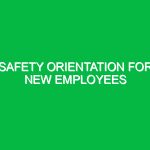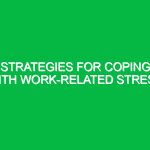Introduction to Stress Management at Work
Stress management at work is a critical component of health, safety, and environment (HSE) practices. It refers to the strategies and techniques employed by both organizations and employees to manage workplace stress effectively. As our professional lives become increasingly demanding, understanding how to mitigate stress becomes vital not only for individual well-being but also for overall organizational efficiency.
According to the World Health Organization (WHO), stress is a significant contributor to various health issues, including anxiety, depression, and cardiovascular diseases. The workplace, often a source of stress due to deadlines, workload, and interpersonal dynamics, necessitates a focused approach to stress management. This article explores the complexities of stress management at work, emphasizing its importance within the HSE framework.
Understanding the Hazards and Risks of Workplace Stress
Identifying potential hazards related to stress management at work is the first step toward developing effective strategies. Workplace stress can arise from various sources, including:
1. Workload and Time Pressure
Excessive workloads and tight deadlines can overwhelm employees. A study by the American Psychological Association found that 61% of employees reported work as a significant source of stress. The constant pressure to perform can lead to burnout, reduced productivity, and increased absenteeism.
2. Job Insecurity
In an ever-changing job market, concerns about job security can create a pervasive sense of anxiety. Employees may feel anxious about potential layoffs or downsizing, leading to decreased morale and engagement.
3. Difficult Work Relationships
Interpersonal conflict with colleagues or supervisors can significantly impact stress levels. A hostile work environment can lead to communication breakdowns, resulting in further stress and decreased collaboration.
4. Lack of Control
Employees who feel they have little control over their work processes or decision-making may experience increased stress. This lack of autonomy can diminish job satisfaction and motivation.
5. Poor Work-Life Balance
With the rise of remote work, the line between professional and personal life has blurred. Employees struggle to disconnect, leading to chronic stress and its associated health risks.
Safety Precautions and Best Practices for Stress Management at Work
Implementing effective stress management strategies can mitigate these risks and enhance overall workplace well-being. Here are actionable steps organizations and employees can take:
1. Promote Open Communication
Encouraging employees to express their concerns and emotions can foster a supportive work culture. Regular check-ins and feedback sessions can help identify stressors early on. For instance, a technology firm implemented weekly one-on-one meetings where employees could discuss challenges. This approach reduced stress levels significantly, as reported by the HR manager.
2. Implement Flexible Work Arrangements
Offering flexible working hours or remote work options can help employees balance personal and professional responsibilities. A study by Gallup found that companies allowing flexible work arrangements saw a 25% increase in employee satisfaction and engagement.
3. Provide Training on Time Management
Equipping employees with tools to prioritize tasks and manage their time effectively can reduce feelings of overwhelm. Workshops on time management techniques, such as the Eisenhower Matrix or Pomodoro Technique, can empower employees to handle their workload better.
4. Foster a Positive Work Environment
A positive organizational culture can significantly impact employee stress levels. Simple practices, such as recognizing achievements or promoting team-building activities, can enhance morale and reduce stress. For example, a manufacturing company introduced a monthly recognition program, which led to a noticeable decrease in workplace stress.
5. Encourage Physical Activity
Physical health plays a critical role in mental well-being. Providing opportunities for physical activity, such as gym memberships or wellness programs, can alleviate stress. One successful case involved a corporate office that organized weekly yoga sessions, resulting in reduced stress and improved employee health.
Regulations and Standards Governing Stress Management at Work
Various regulations and standards guide organizations in managing workplace stress. Understanding these can help companies create compliant and effective stress management programs:
1. Occupational Safety and Health Administration (OSHA)
OSHA emphasizes the importance of a safe work environment, which includes managing stressors that can lead to health issues. Employers are encouraged to implement programs that address workplace stress as part of their overall health and safety policies.
2. The Health and Safety at Work Act 1974 (UK)
This legislation requires employers to ensure the health, safety, and welfare of employees, which includes psychological well-being. Organizations must conduct risk assessments that encompass stress-related hazards.
3. International Organization for Standardization (ISO) 45001
This standard provides a framework for managing occupational health and safety risks, including stress management. Adopting ISO 45001 can help organizations systematically address the factors contributing to workplace stress.
Conclusion: The Path to Effective Stress Management at Work
In today’s fast-paced work environment, effective stress management at work is not just a personal responsibility; it is a collective organizational goal. By recognizing the hazards associated with workplace stress and implementing strategic, proactive measures, employers can significantly enhance employee well-being and productivity.
As organizations strive for a healthier workplace, the integration of stress management practices within the HSE framework becomes increasingly essential. By fostering a culture of open communication, promoting work-life balance, and adhering to relevant regulations, businesses can mitigate the adverse effects of stress, ultimately creating a more engaged and productive workforce.
In the words of renowned author and motivational speaker, Tony Robbins, “It’s not the lack of resources that causes failure; it’s the lack of resourcefulness.” In the context of stress management, it’s the resourcefulness of organizations and individuals alike that will pave the way for healthier, more resilient work environments.


